Google Chrome web browser has a built-in Password Manager that helps you save Passwords of websites you successfully log in to. The decision to save them or not remains with the user. If you go ahead with saving the password, Chrome will autofill the saved passwords the next time you enter the specific website. You might want to import or export chrome saved passwords on your PC or Mac at times.
Here are the best methods to import passwords to Chrome and export Chrome passwords easily on your PC or Mac.
Content
- Export Passwords from Google Chrome
- Import Passwords to Chrome Using Flag
- Import Password to Chrome Using Command Prompt
- Remove Saved Passwords in Chrome
Export Passwords from Google Chrome
There may be multiple situations where you would want to export passwords from Chrome, such as:
- When you are changing your PC/Laptop to a newer one
- You wish to alter existing passwords in bulk and want to import passwords back to Chrome.
- Switching current PC or Operating System.
- Due to some security breach by another user and you need to change the current passwords immediately.
We recommend exporting the current passwords to an Excel or CSV file, make the alterations and import passwords to Chrome. These steps will help to resolve all the scenarios mentioned above.
Related: Where to Find Auto Saved Passwords in IE, Chrome, Firefox and Safari?
The following steps showcase how you can easily Export Chrome Passwords :
- Type in “chrome://settings” in the address bar. Alternatively, click on the three dots dropdown located at the right-most corner of the Chrome Tools bar and click on “Settings.”

- Click on “Passwords” located under the “Autofill” section. Here, you will be able to see the list of all saved passwords for various websites.
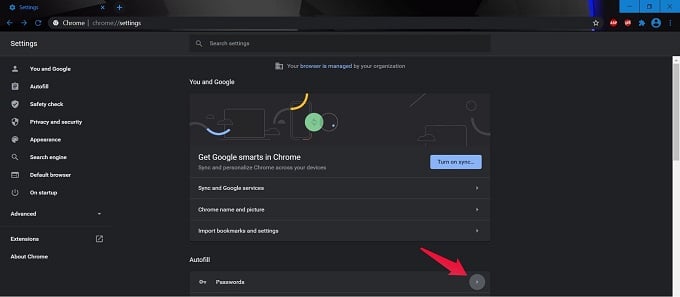
- Click on the three dots button located towards the right side of the “Saved Passwords” option. Then, click on “Export Passwords.”
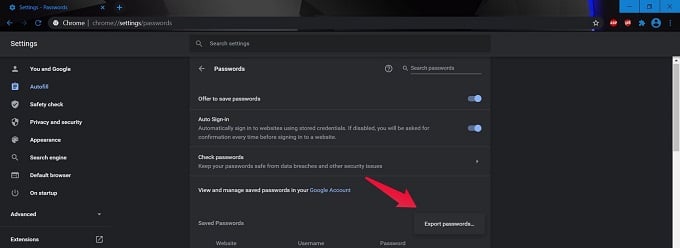
- Chrome would then show a prompt. Click on “Export Passwords.”
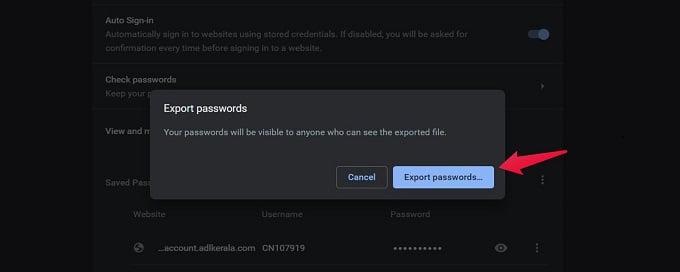
A CSV file will generate that contains the list of all saved passwords on Chrome. You can download this to the desired location, view it, and make the required changes.
Note: Anyone with Administrator privileges can Export the Saved Passwords. Also, the generated CSV is not password protected. Therefore, we highly recommended deleting the same once it serves your purpose.
Import Passwords to Chrome Using Flag
Once you have modified the appropriate passwords, the next process would be to import these new passwords back to Google Chrome. The following steps help you to Import Passwords to Chrome by enabling the password import flag.
- Type “chrome://flags/” in the Google Chrome Address Bar.

- Within the “Search flags” Search Bar, search for “Password Import.”
- Under the “Experiments” section, you will see “Password Import” is in the “Default” state.
- Click on the dropdown and select “Enabled.”

- This action will bring up a “Relaunch” button on the bottom right corner of the Chrome window. Click on it.
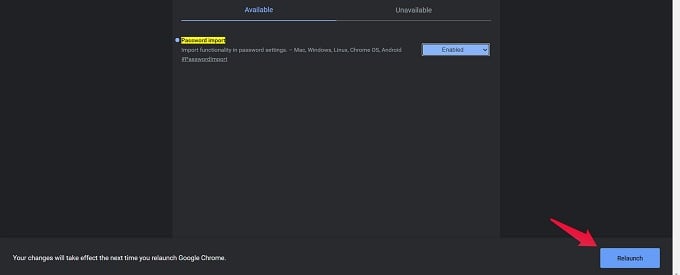
- The Chrome browser will close and reopen in a span of a few seconds. Go to the browser settings page again. (Type “chrome://settings/passwords” in URL bar).

- Click on the three-dots button against the “Saved Passwords” section. Select the “Import” option.
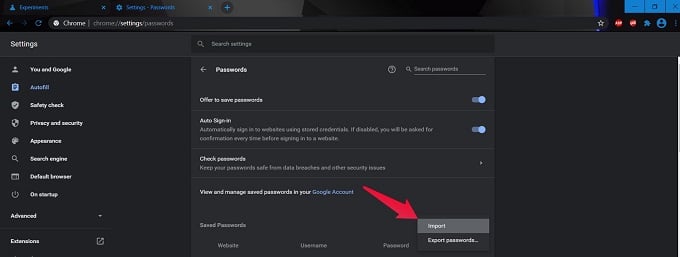
- Browse for the CSV file with the Chrome Passwords, which you modified in the previous stage, and click “Open.”
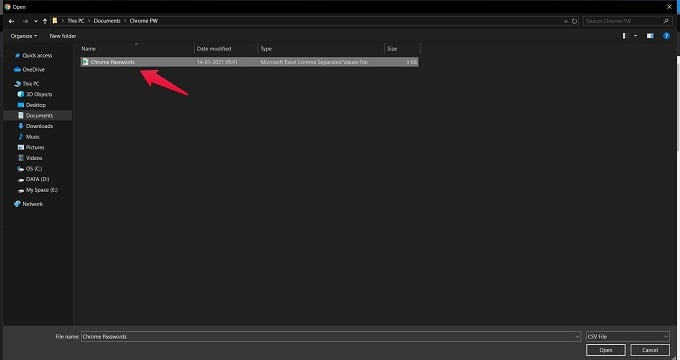
The password manager of Chrome would update all the passwords based on the values entered in the CSV.
Related: How to Organize Bookmarks in Chrome on Your PC or Mac
Import Password to Chrome Using Command Prompt
In case you can’t use the first method due to Password Import Flag’s unavailability, you can resort to Import Password to Chrome using the Command Prompt on Windows. The following sequence of steps describes how to do so.
- In the Search Bar, type “CMD.” This action will open the Command Prompt.
- Ensure Google Chrome is open. Copy-paste the following commands on to the Command Prompt window:
cd "\Program Files (x86)\Google\Chrome\Application"and press Enter.
“chrome.exe -enable-features=PasswordImport”and press Enter.

- Upon execution of the above command, the Google Chrome browser would restart automatically.
- Type in “chrome://settings” in the address bar. Alternatively, click on the three dots dropdown located at the right-most corner of the Chrome Tools bar and click on “Settings.”

- Click on the three dots button across the “Saved Passwords” section. Select the “Import” option.

- Browse for the CSV file with the Chrome Passwords and click “Open.”

The password manager of Chrome would update all the passwords based on the values entered in the CSV.
Remove Saved Passwords in Chrome
Undisputedly, Google Chrome is the most popular web browser available. But, just in case you want to shift to a new browser like Firefox, for example, we often forget to Export Passwords from Chrome on to the new browser or remove them altogether.
For the latter case, this may lead to a security breach and end up in data loss and even much more. To avoid this situation, once you have successfully exported and imported Chrome passwords to the new browser, do not forget to remove them from Chrome. The following steps help you to remove passwords from Chrome.
- After opening Chrome, type in “chrome://settings” in the address bar.
- Click on “Passwords” located under the “Autofill” section. As before, you will be able to see the list of all saved passwords for various websites.
- Scroll over to the website whose password you want to remove.
- Click on the three-dot button across it.
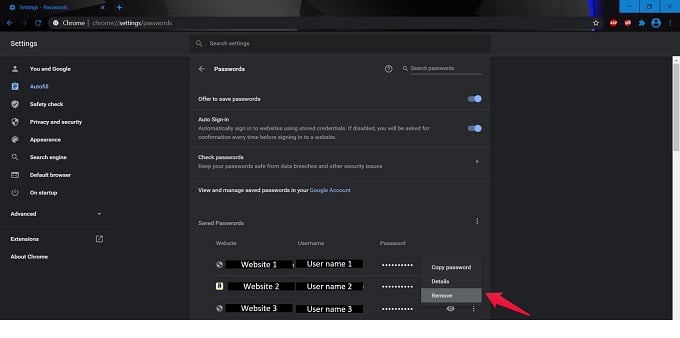
- Choose the “Remove” option. This step will remove the website details along with the saved password.
Related: How and Why to Create a New Profile in Google Chrome
With this step, we have come to the end of our tutorial. The article showcased “How to Export Passwords from Chrome and How to Import Passwords to Chrome.” We hope you found it easy and useful to securely move your website passwords containing Private and Critical data.
